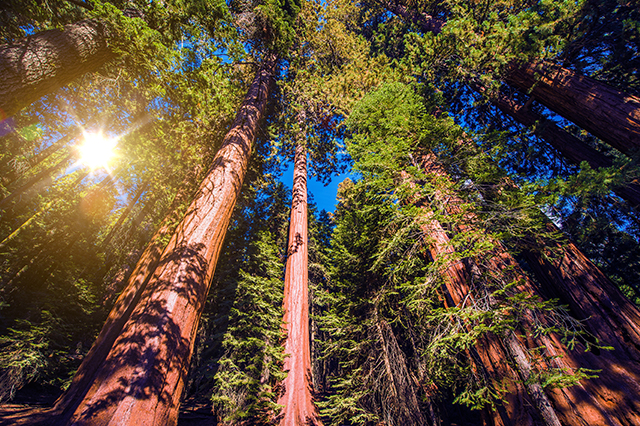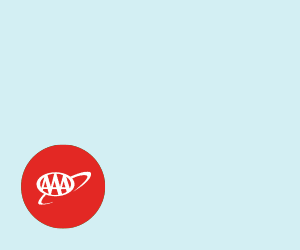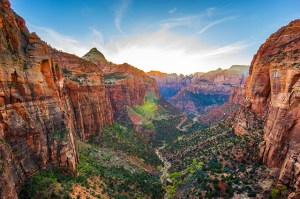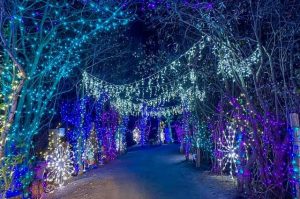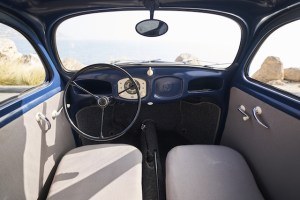Is the park open year-round?
Yes, Redwood National and State Parks is open all year. Some park facilities are closed during the offseason.
Where is the park located?
Redwood National and State Parks is located in coastal northern California.
How big is the park?
The park covers approximately 139,000 acres, with forty miles of coastline and 45 percent of the remaining coastal redwood forests.
How do I get around in the park?
Most visitors drive their own cars and campers into the park.
What activities are available?
Some of the popular activities to plan for a Redwood National Park vacation include:
- Hiking/walking: The park offers more than 200 miles of trails of all levels, from a casual stroll through the misty redwood stands to a more challenging hill climb. Trails are often wet and slippery, so be sure to wear appropriate footwear and rain gear.
- Scenic drives: The park is filled with short and long drives that visitors can follow to see the redwoods, the coast, and the wildlife. Note that many of the roads are not suitable for motorhomes and RVs because they are not paved or are very narrow. Consult the park’s website or visitor center for details.
- Go tidepooling: Redwood National and State Parks has easily accessed tidepools at Endert’s Beach, Damnation Creek, and False Klamath Cove. Some of the ocean creatures that visitors can see in these tidepools include sea stars, mussels, crabs, snails, and sea cucumbers.
- Wildlife viewing: Because this park contains both inland areas and seacoast, visitors can discover a wide range of animals, from the herds of elk in the meadows to the gray whales migrating off the Klamath River Overlook. Sea birds are also abundant near the water.
- Bicycling: Unlike in many other national parks, visitors can bicycle on some of the backcountry roads in Redwood National and State Parks. Maps of roads where bicycles are permitted are available at the visitor center. Roads range from flat and easy to steep and challenging.
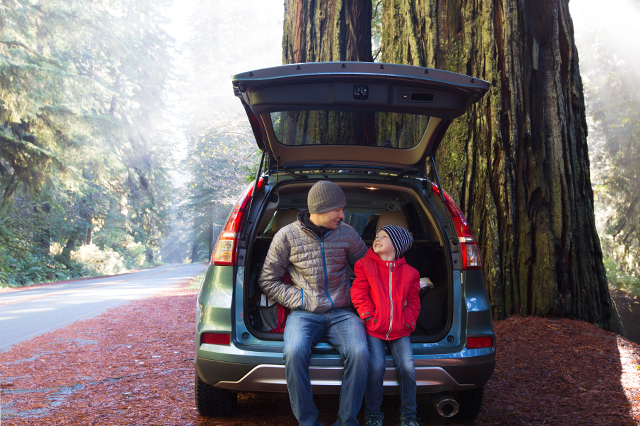
Are pets allowed?
Pets are permitted in limited areas in the park, including road-accessible beaches, picnic areas, within 100 feet of public roads and parking areas, and all road-accessible campgrounds. They are not allowed on trails or the backcountry.
Is the park accessible?
The facilities in the park, including the visitor center, picnic areas, and campgrounds, are fully accessible. Some trails, such as the Big Tree Wayside, are also accessible.
What accommodations or restaurants are available?
There are no lodging facilities or restaurants within Redwood National Park. Camping is allowed within the park, however, both at developed campgrounds and at backcountry sites. A permit is required to use the backcountry facilities. Accommodations and food can be found in all the nearby communities.
What are the most popular areas of the park?
- Crescent Beach: This popular beach has a grassy picnic area with fire pits and restrooms.
- Coastal Drive: The Coastal Drive weaves through redwoods, along the Klamath River, and follows the coastline. Though the drive was once longer, landslides have closed all but this eight-mile loop. This road is closed to trailers and RVs.
- Fern Canyon: The one-mile, relatively level trail on the canyon floor follows the Home Creek through the forest. A wide variety of ferns sprout from the fifty- to eighty-foot canyon walls, giving the area its name.
- Lady Bird Johnson Grove: This area is one of the park’s more accessible to view the redwood. An easy one-mile trail loops through the forest on an old logging road.
- Newton B. Drury Parkway/Big Tree Wayside: This ten-mile scenic drive takes visitors through old-growth redwoods and areas where herds of Roosevelt elks frequently gather. Along this parkway is Big Tree, a 304-foot-tall redwood with a diameter of twenty-one feet.
Which national park would you like to visit most? Is Redwood National Park on your list? Tell us in the comments.

